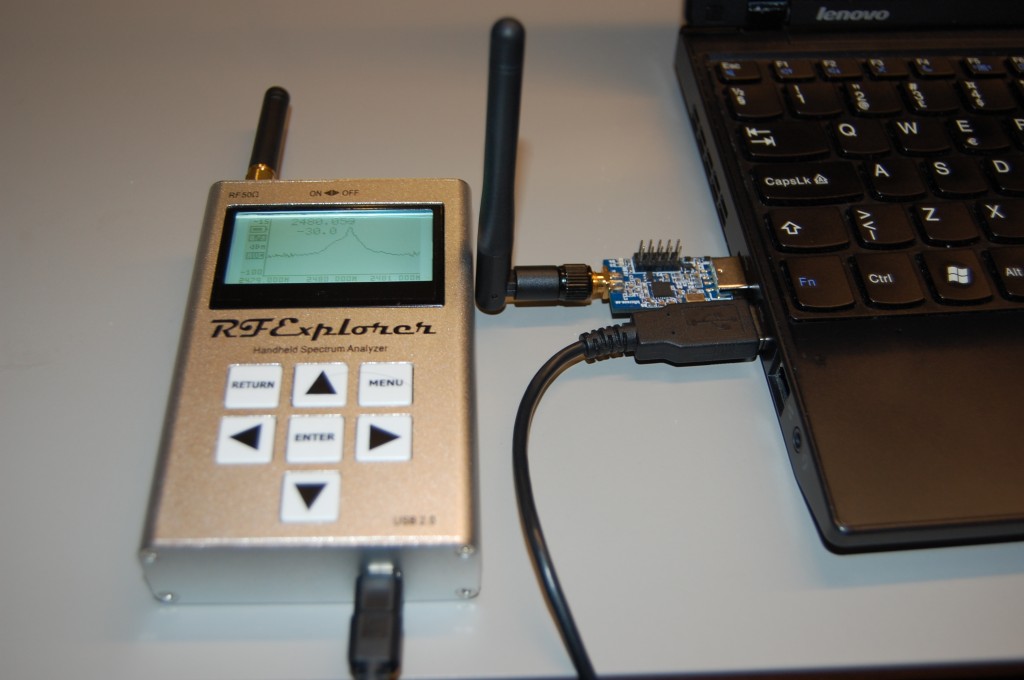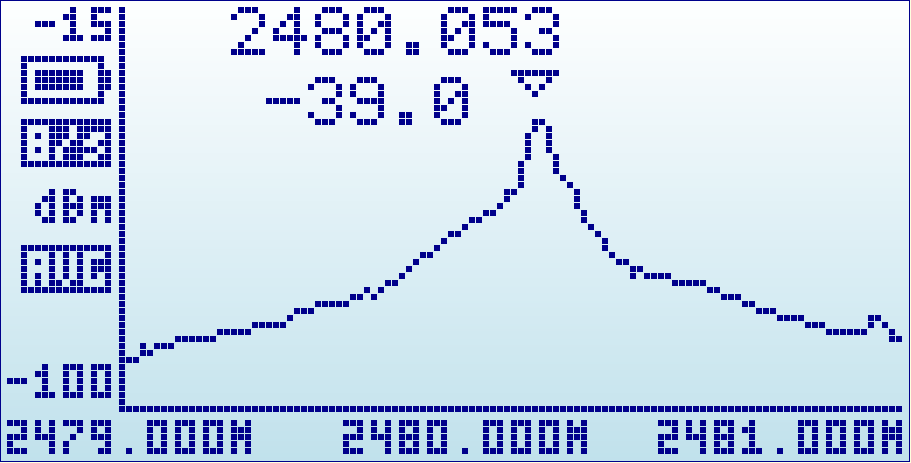We are still working hard on the Crazyflie code while we are waiting for the new prototypes. We are also working on finalizing the Crazyradio, the radio dongle we are making to communicate with Crazyflie.
In order for us to test the radio hardware performance we brought a RFExplorer:
The radio chip (nRF24U1) is put in continuous carrier mode, which makes it emit constantly at a single frequency. Below is a screenshot of the measured frequency and power from the radio dongle:
This measurement is not that useful as an absolute value (for one we do not have a RF test chamber) but it will give us the opportunity to compare the next prototype with this one. Our next radio prototype uses smaller SMD component for the RF parts which is supposed to give better performance. We already compared it with another dev board and our radio seems to have similar performance :).


You will also need to impedance match your designs. Especially on the Copter were you’re using a LTCC-Chip Antenna. These Antennas are heavily ground-plane dependent. The antenna’s resonance frequency also shifts dependeing on ground-plane size – and therefore insertion loss increases, which then will give poor RF-performance.
Btw in case of the nRF24xx, there is a balun available which allows transforming of the differential rf i/o to a single ended 50ohm port.
http://www.johansontechnology.com/images/stories/ip/baluns/balun_filter_combo_matched_2450bm14a0002_v2.pdf
That makes discrete component networks obsolete.. you will only need to match your antenna to the 50 ohm output port using a T or Pi network.
Therefore you will have to measure your actual design using a VNA…
Best regards,
Florian
Hi Florian,
Thanks for your good pointers! We have actually been thinking about using the Johansontech. balun but it is a bit difficult to source so we choose not to. Neither of us are any RF experts so we have been sticking to the application notes and reference designs and so far it has been working. How well is hard to say though. Having the possibility to use a VNA would be great but unfortunately we do not, so for now the RF Explorer is the best we got.
Hi,
I am starting an university project in which I am projecting a small quadrotor, but it’s been dificult to find small propellers such as those you used in your project. Can you give me a tip of where I can find some small one’s?
Thanks,
Fabio
It is not so easy to get the small propellers yet. We used X-Twin spare parts from the beginning which you can find e.g. on E-bay but they are often expensive. Seeedstudio will sell repair kit for us when everything is ready but that can take a while so for now we are sorry we can’t help you. :-(